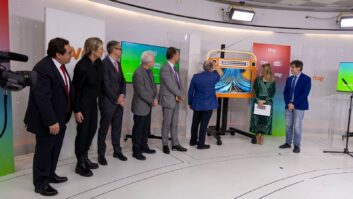Audemat Makes Green Effort on CO2
Dec 3, 2007 1:01 PM
Bordeaux-Merignac, France – Nov 28, 2007 – the Audemat Group has decided to expand its approach to environmental concerns that came about through ISO 14001 certification, the environmental management standards that exist to help organizations minimize the negative impact of their operations on the environment. Concrete actions aiming to offset production of greenhouse gas have started: Construction of a production plant with HQE (high environmental quality eco building) and design of new products with low energy consumption are two examples involving a large majority of the employees of the company. Despite these efforts, and as with many industrial activities, the Audemat group produces several hundred tons of CO2 each year (650 tons in 2007). Audemat is partnering with Good Planet to accomplish this goal.
Three programs have been identified by the company as priorities:
1. Reforestation of small properties belonging to the indigenous Mapuche communities in Chile. This reforestation project situated in the Auracanie region not only intends to capture and store carbon by growing trees, but also to restore heavily eroded soils and to provide some extra income for the inhabitants involved in the project.
2. Production of green charcoal in the Saint-Louis region in Senegal. The goal is to produce green charcoal from agricultural residues or from renewable biomass following a process known as pyrolysis. This domestic fuel stems the increase in deforestation and CO2 emissions. This project is estimating a reduction of approximately 5,000 tons of CO2 emission into the atmosphere.
3. Reforestation in the Sierra Nevada de Santa Marta in Colombia. The goal of this project is to enable the natural regeneration of land where forest has been burned or cut down, by buying those parcels and returning them to the native inhabitants. The Kogis Indians then cultivate the degraded land, thus restoring the ecological balance of the region. The carbon dioxide dissolved in the atmosphere is rapidly captured and stored by the lush vegetation that thrives by the excellent climate.












